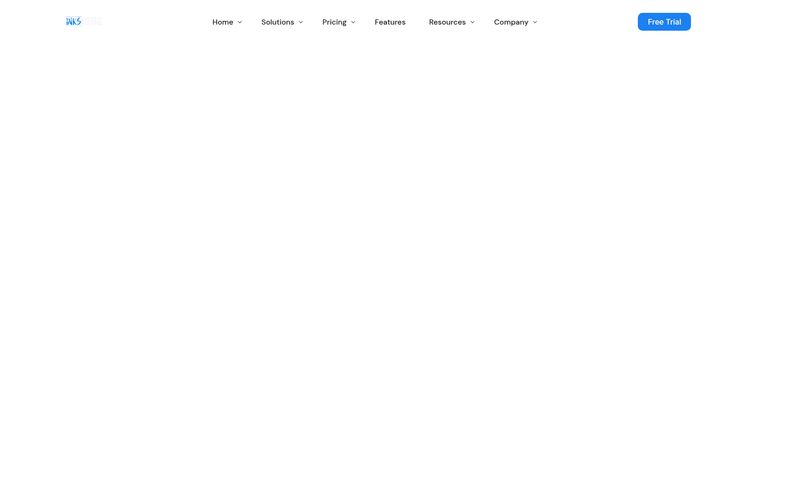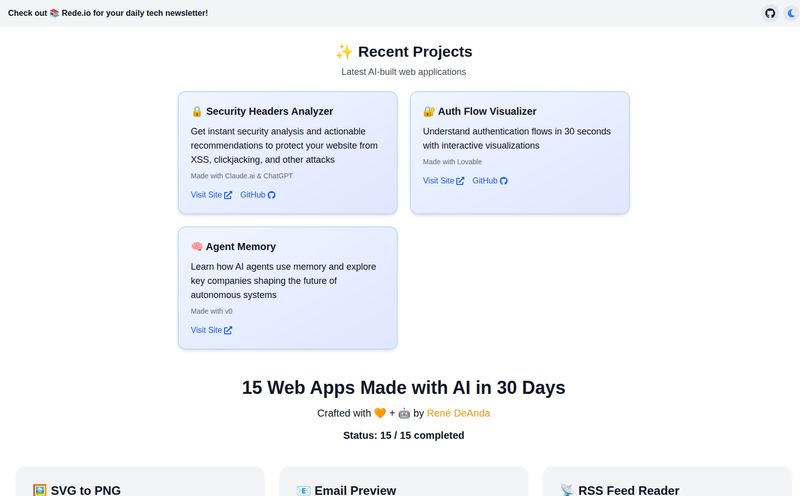We’ve all been there. You’re deep in a flow state with ChatGPT, feeding it a massive document, a dense research paper, or maybe the entire transcript of a one-hour podcast. You're about to ask the most insightful question of your life. You hit enter, and... BAM. The dreaded 'message too long' error. It’s the digital equivalent of a needle scratch on your favorite record, and it instantly pulls you out of your groove.
For years, the workaround has been a clumsy, manual process of copying and pasting. Splitting your text into arbitrary chunks, hoping you don't break a sentence mid-thought, and then feeding them to the AI one by one, praying it remembers what you said in part one by the time you get to part seven. It’s tedious. It's inefficient. And frankly, it's a massive pain.
I’m always on the hunt for tools that smooth out these little workflow frictions. So when I heard about a tool called Split Prompt, my curiosity was definitely piqued. A simple tool dedicated to one thing: intelligently splitting long text for ChatGPT. I had to check it out.

Visit Split Prompt
So, What Exactly Is This Split Prompt Thing?
At first glance, you might think, “Oh, it’s just a text splitter.” But that's selling it short. Split Prompt is a bit cleverer than that. Instead of just cutting your text every 2000 characters, it uses token-counting. This is the secret sauce, and it's what separates a purpose-built tool from a simple character counter.
For anyone not deep in the AI weeds, a “token” is basically a chunk of text that language models like GPT-4 process. It can be a whole word like “apple” or just a piece of a word, like “app” and “le.” OpenAI's models think in tokens, not characters or words. So, splitting your text based on the model’s actual unit of measurement? That’s just smart. It ensures each chunk is as large as possible without exceeding the context window, which means fewer chunks overall. Fewer chunks mean less copying and pasting and, more importantly, a better chance the AI can maintain context across the entire prompt.
Why You Should Genuinely Care About Token Limits
I know, talking about tokens and context windows can feel a bit technical, but if you're using ChatGPT for any serious work, this is a hurdle you can't ignore. It’s not just an inconvenience; it directly affects the quality of your output.
The Agony of the Disappearing Context
Imagine trying to explain a complex movie plot to a friend, but you can only speak in 10-second intervals with a minute of silence in between. By the time you get to the third act, they've probably forgotten who the main character was. That’s what happens when you manually feed chunks to ChatGPT. The model has a finite memory—its “context window.” While it's getting better with models like the GPT-4 32k version, the standard versions most of us use are more limited. If your input and the ongoing conversation exceed that limit, the AI starts to “forget” the earliest parts of the conversation. Your brilliant analysis of a 10,000-word report turns into a muddled summary of the last two pages.
Split Prompt helps mitigate this by creating optimized, digestible chunks that are designed to fit perfectly within the model’s limits. It’s like giving the AI a perfectly organized set of index cards instead of a messy pile of scrap paper.
Putting Split Prompt Through Its Paces
Talk is cheap, so I decided to throw a real-world task at it. I had a long article about Google's latest algorithm updates that I wanted to summarize and pull key SEO strategies from. The article was well over 5,000 words—a definite no-go for a single ChatGPT prompt.
A Clean and Simple Experience
The interface is refreshingly minimal. There's a big box for your text, a dropdown to select your model (GPT-3.5, GPT-4, or even a custom token limit), and a big friendly button that says “Split Prompt.” No clutter, no ads popping up, no confusing settings. I appreciate that. It knows what it's for, and it gets right to the point.
I pasted my entire article in, selected GPT-4 (which has a larger token limit), and clicked the button. Instantly, the tool broke my text down into a handful of numbered chunks. Each chunk was neatly packaged in its own text box, complete with a “Copy” button. The tool even adds a little instruction to each part, like "Part 1/4:" so you and the AI can keep track. A nice little touch.
"The process was… uneventful. And I mean that as the highest compliment. It just worked. No fuss, no errors."
The copy-paste dance was still there, of course—the tool can't automate that part for you—but it was so much more organized. I fed the chunks into ChatGPT one after the other, and the final summary it produced was coherent and comprehensive. It remembered details from the beginning of the article, which I'm certain wouldn't have happened with my old “guess and check” splitting method.
The Good, The Not-So-Bad, and The Quirky
After playing around with it for a bit, here’s my honest breakdown.
What I'm a Fan Of
First off, its main premise is its biggest strength. Overcoming ChatGPT's word limits with token-based optimization is a game-changer for anyone working with long-form content. Whether you're a student summarizing research, a developer feeding in code, or an SEO like me analyzing competitor content, this is incredibly useful. The support for different models is also a huge plus. Being able to switch between GPT-3.5 and GPT-4, or set a custom limit for other models, shows the developers understand their audience.
A Few Small Caveats
This isn't a magic wand. You still need a basic understanding of what you're doing. The tool splits the text, but you’re still the pilot guiding the conversation with the AI. Sometimes, depending on the text, the split might happen in a slightly awkward spot. In my testing, it was pretty good, but I could see a scenario where you might want to manually adjust a chunk before pasting it. Also, the documentation hints that the free version may have limitations, which brings us to the next point...
The Million-Dollar Question: What's the Catch?
As far as I can tell, right now, there isn't one. The tool is free to use. I couldn't find a pricing page or any mention of a paid plan on the site itself. The mention of “free version limitations” in some of the tool's descriptions feels more like future-proofing than a current reality. My guess? The creator might introduce a Pro version down the line with more advanced features, maybe API access or direct integration. But for now, it's a wonderfully functional and free utility. And in this economy, we love to see it.
Frequently Asked Questions about Split Prompt
What is Split Prompt?
Split Prompt is a free web tool designed to break down long pieces of text into smaller, manageable chunks that are optimized for AI models like ChatGPT. It uses token-counting to ensure each chunk fits within the AI's context window, making it easier to process large documents.
Is Split Prompt free to use?
Yes, as of right now, Split Prompt is completely free to use. There is no pricing information or paid tier available on their website.
How does Split Prompt actually work?
It works by calculating the number of 'tokens' in your text, which is the unit of measurement AI language models use. It then divides the text into the minimum number of chunks possible, with each chunk being just under the token limit for the specific model you select (like GPT-3.5 or GPT-4).
Does Split Prompt work with the latest GPT-4 models?
Absolutely. It has a dedicated setting for GPT-4, which has a different token limit than its predecessor, GPT-3.5. It also allows for a custom token limit if you're working with other models.
Why is splitting by tokens better than splitting by characters?
Because AI models 'think' in tokens, not characters. A character-based split is just a guess and can often create chunks that are still too long or are unnecessarily small. A token-based split is precise, creating the most efficient and optimized chunks for the AI to process.
Do I still need to copy and paste each chunk into ChatGPT myself?
Yes, you do. Split Prompt prepares and organizes the chunks for you with convenient copy buttons, but it doesn't automatically send them to ChatGPT. You still need to copy each part and paste it into your chat conversation.
My Final Verdict on Split Prompt
So, is Split Prompt worth bookmarking? For me, it’s a resounding yes. It’s a simple, elegant solution to a very common and frustrating problem. It's not a flashy, all-in-one platform, and it doesn't try to be. It’s a specialized utility that does its one job exceptionally well.
If you're a ChatGPT power user, a writer, a researcher, a student, or anyone who has ever stared at that “message too long” error in despair, do yourself a favor and give it a try. It might just become one of those quiet, indispensable tools that you wonder how you ever lived without. It's a perfect example of a small tool making a big difference in a daily workflow.
Reference and Sources
- The Split Prompt Tool: split-prompt.vercel.app
- OpenAI's Explanation of Tokens: What are tokens and how to count them?



